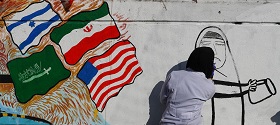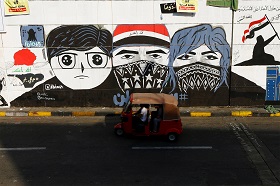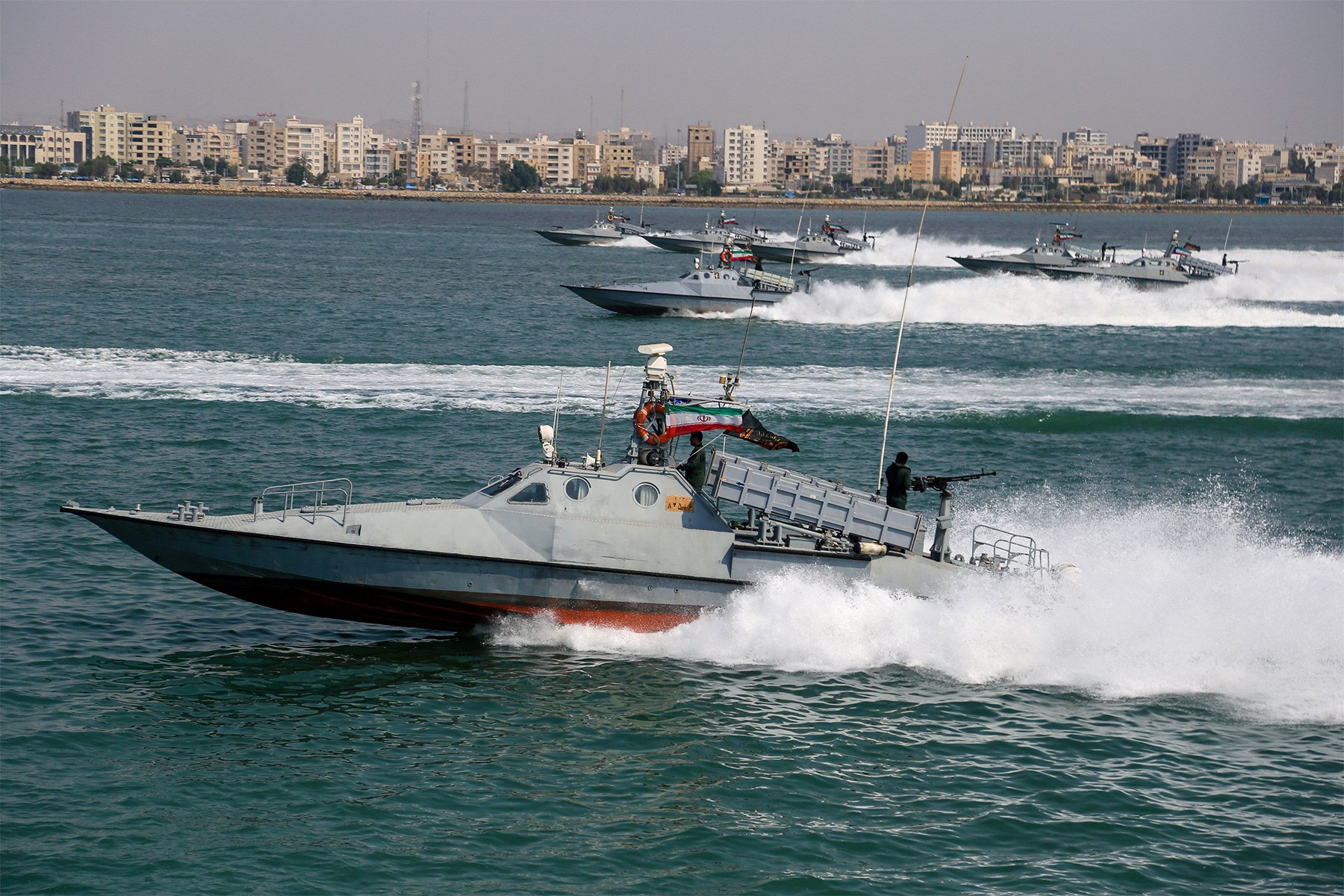International relations have been undergoing a gradual but sustained transformation over the last few decades. […] Increasingly, state and non-state interactions can be seen to determine the making of politics: US relations with the Kurds of Iraq bear testimony to this. From 1994 onwards the US State Department increased active working with the Kurdish Regional Government (KRG) as a vital component of the Iraqi opposition. The leading Kurdish role in US plans for ‘regime change’ in Iraq, along with the convergence of the United States and Kurdish interests, led gradually to the onset of a US Kurdish policy.
Whilst US foreign policy has traditionally perceived Iraq as a single entity, the external and internal structural changes — still in progress — have shifted US foreign policy from mere contact with the Kurds of Iraq in the 1960s to an institutionalised relationship, akin to that which it might have with state power. Such interactions between states and non-states are ultimately altering how foreign policy is perceived, formulated and implemented.
Both Iraq and Syria remain critical determinants of the formulation of the US regional foreign policy. The need for the US to increase its presence on Iraqi soil, a traditional sphere of influence, is not only dependent on the limited and decreasing US presence in Syria. But also, on its changing Syrian policies. […] This development then necessitates a re-evaluation of the US foreign policy in its practice. As far as the region is concerned, as, in reality, US relations with the rest of the Kurdish entities, and mainly the Kurds of Syria, that is the PYD (The Democratic Union Party, Partiya Yekîtiya Demokrat), are still under early formation. [...]
Geographically, Iraq is internally (as well as territorially) divided and, arguably, only a mode of governance that can respect such divisions will enable the preservation of Iraq as a unit. In any case, the US interactions with the KRG appear to be a working model that the other Kurdish cases could follow once there is a convergence of interests. However, and given the complications that the US regional foreign policy strategies are identified by, the latter remains to be seen in a region under configuration.
International relations have been undergoing a gradual but sustained transformation over the last few decades. For example, the 2014-2017 peshmerga-Islamic State (IS) war, while a case of a small, asymmetric one, further instigated US engagement with the Kurdish armed forces. Increasingly, state and non-state interactions can be seen to determine the making of politics: US relations with the Kurds of Iraq bear testimony to this. From 1994 onwards the US State Department increased active working with the Kurdish Regional Government (KRG) as a vital component of the Iraqi opposition. The leading Kurdish role in US plans for ‘regime change’ in Iraq, along with the convergence of the United States and Kurdish interests, led gradually to the onset of a US Kurdish policy.
Whilst US foreign policy has traditionally perceived Iraq as a single entity, the external and internal structural changes — still in progress — have shifted US foreign policy from mere contact with the Kurds of Iraq in the 1960s to an institutionalised relationship, akin to that which it might have with state power. These interactions between states and non-states are ultimately altering how foreign policy is perceived, formulated and implemented.
Based on the unfolding of regional developments, three concerns arise in reference to the Kurdish case(s): the importance of determining which specific Kurdish entity is referred to, disentangling the confusion over the approach of US foreign policy towards the Kurds, and highlighting why misperceptions have hampered a clear understanding of these interactions.
Therefore, it is necessary to ascertain which Kurdish entity is appointed. Such confusion and lack of definition have made US relations with the Kurds a challenge to perceive and discuss. Tracking the evolution of the US relationship with the KRG helps delineate this and demonstrates that within the broader context of US-Kurdish relationships, we can only consider an institutionalized relationship to exist between the US and the Kurds of Iraq.
The role of Non-state actors
Non-state actors can be classified as: a) institutions, b) fundamentalist groups, c) ethnic groups (e.g. establishments such as PKK, PYD and others), d) military/militia groups, and e) ‘states to be’ (e.g. KRG/ PLO).
The Kurdistan Region of Iraq (KRI) as an entity falls into the last category — ‘states to be’ [1], given their significant recognition, along with their state-like characteristics. As an actor of this typology, its trajectory demonstrates the capacity for such a non-state actor to operate as an agent that can develop and evolve relations in an institutionalized form with other state entities.
The US institutionalized relationship with the KRI
Thus, an evolution in US-Kurdish relations can only be traced in the case of the Kurds in Iraq, due to their long-term trajectory identified through a series of stages supported by specific historical episodes. For instance, ‘starting from David Schwartz, there has always been an official in the Iraqi section of the Northern Gulf Affairs Office in the State Department’s Near Eastern Bureau, in charge of Iraq’s domestic portfolio, part of which was the Kurdish file as well’ [2]. The stand-alone evolution of US relations with the Kurds in Iraq (in contrast to the Kurds in general) is also evident through the different US foreign policy approaches developed towards Kurdish entities.
In contrast, the US relations with the Kurds of Syria and Turkey are both still to be found at an early stage. Limited interactions to have taken place are those through events such as the Syrian crisis (March 2011) or earlier the capture of Abdullah Ӧcalan in February 1999, which was facilitated by the US, representing significant interference in Turkey’s Kurdish affairs (in addition to more recent US declarations on behalf of the Congressional Human Rights Commission over Selahattin Demirtaş’s imprisonment).
It has been argued that the recent crisis in Syria forged a ‘US tactical alliance with actors associated with the Kurdish Movement in Syria… in the effort to contain and defeat ISIS,’ [3] especially from 2014 onwards. However, the on-going Syrian crisis has made clear that the US does not appear to have options in terms of allies on the ground but the Kurds. This condition also explains the importance of the non-state actors’ typology prior to the classification of the different Kurdish entities
The onset of direct US relations with the Kurds of Iraq commenced from about August 1969 through economic aid. These developments are linked to the broader context related to the structural changes occurring during the Cold War, rather than to the Kurdish issue per se. Covert relations evolved into direct US-Kurdish contact at an official level, circa July 1972. US direct intervention in the Middle East from the 1990s onwards signaled a new era for the state of international politics. US direct contacts and exchange of visits and delegations with the newly born KRG (May 1992) brought to the third stage in their mutual relations to the extent that an overt and official relationship during the 1990s was established. This third stage stabilized America’s relationship with the Kurds of Iraq from thenceforth and into the twenty-first century. This official US interactive relationship with the KRG sowed the seeds for the fourth transformation of the US–Kurdish relationship into an institutionalized one of strategic importance from 9/11 onwards, which, in turn, evolved into an explicit US Kurdish policy within the Iraqi framework in the post-Saddam era. Albeit undeclared, this official US-Kurdish policy towards the KRI dates back to George W. Bush’s formal invitation to the Kurdish President, Massoud Barzani, to the White House in 2005 and the ensuing developments. Obama’s Presidency established the sixth phase in US- KRG relations, manifested by a declared US Kurdish policy. This was motivated not only because of Iraq’s internal structural complications but also due to broader external regional and international challenges, namely, the rise of IS, disputes regarding the KRG’s constitutional role and the latter’s increasingly vital role in Iraq’s political processes. Under the Trump administration, this relationship has been boosted into the political level and built upon Baghdad’s continuous instability, particularly since the landmark elections of May 2018, notable for a poor turnout, which led to increasing calls for Kurdish support of the political process. More recently, the Commanding General of Combined Joint Task Force, Operation Inherent Resolve, in Iraq and Syria, Lt. Gen. Robert White, reaffirmed the US support of the security of the KRI through close military and diplomatic cooperation. However, no remarkable shifts should be attributed to the evolution of the already established US-KRG relations during these past two presidencies.
Trump’s foreign policy appears today to be a combination of Barack Obama’s practice and George W. Bush’s rhetoric. Current US policies vis-à-vis broader Kurdistan appear affected by the contrast of Barack Obama’s amalgam of hesitancy in his second term, together with his interventionist Middle Eastern foreign policy, reminiscent of the traditional US regional foreign policy approach, as opposed to his so-called “reset” discourse that marked his first tenure of office. This abrupt diversion from his predecessor’s policies resulted in a fragmented US foreign policy structure, inherited, and further exacerbated, by the rise in power of Donald Trump.
Trump’s diversion from a traditionally linear US foreign policy has been a hallmark of his presidency: he has adopted a revolutionary foreign policy, depicted in the excessive use of social media and the exclusion of the multi-tiered bureaucracy in policymaking. Whereas in its essence, implementation of the leading US foreign policy objectives has not altered significantly, Trump did adopt a more simplistic and direct discourse. A far more realistic articulation of these same US interests marks him as distinctive from his predecessors, along with the fact that he has been under constant attack by a divided — as Trump’s loaded rhetoric deems it — US foreign policy establishment. Moreover, the traditional gap between US rhetoric and practice, as was also witnessed during Obama’s Presidency, now appears to have widened. In a fluctuating world where structural changes are rapid, let alone the need for diverse alliances to survive global alterations, there is an increasing imperative for closer collaborations, such as is seen with the KRG. The latter necessitates the development of clearer US policies, both towards Erbil and Baghdad, which can run in parallel.
The US foreign policy and the Kurds in international relations
To be able to approach the multi-faceted nature of the US foreign policy towards the Kurds in the Middle Eastern context, three inferences can be deduced. First, the clarification as to which Kurdish entity do we appoint. International Relations theory arguably provides useful employable tools for the study of the interactive US-KRG inter-relationship and its foreign policy implications. Foreign policy decisions are based on the interaction between the international and regional, as well as between the intersection of the domestic and the external, requiring a global relations framework for analysis and comprehension. Similarly, importing terms and concepts from other disciplines can only complicate the interpretation of foreign policy.
In specific, a common misinterpretation [4] of US relations with the different Kurdish entities is that these have often been perceived as a single evolution of US foreign policy encompassing more than a Kurdish entity, thus associating the Kurds collectively with US foreign policy. The different Kurdish entities are consequently being treated not as different cases but as an abstract collective, abolishing the distinctive characteristics of each Kurdish historical trajectory vis-à-vis the US foreign policy. Instead, analysis should attempt to trace, wherever possible, the development of each case separately, as parts of a whole, rather than perceive them as one. It appears, then, unreasonable and inaccurate to combine the different US relationships with the distinctive Kurdish entities, given that the latter have, and continue to be, formed by different contexts and bred under different conditions.
Conclusion
In the past decade, two successive US administrations do not appear to have significantly altered the basis on which US interactions with the Kurds of Iraq have been shaped. Instead, a series of regional and international structural changes (primarily of a material kind) seems to have consolidated further the strategic nature of this interaction. Despite ebbs and flows that govern any relationship in international politics, the US interaction with the KRG is identified by specific objectives and interests. Nevertheless, developments such as the changing nature of Iraq’s domestic political structures or the rise in power of the IS (so far), have not altered the quality of the US interactions with the KRG. On the contrary, and as a result, a steady increase in the institutionalization of their relations continues.
Both Iraq and Syria remain critical determinants of the formulation of the US regional foreign policy. The need for the US to increase its presence on Iraqi soil, a traditional sphere of influence, is not only dependent on the , limited and decreasing US presence in Syria. But also, on its changing Syrian policies: Bashar al-Assad , stated that Trump was the “best American president” for his “complete transparency” about intentions to maintain control of Syria’s main oilfields in Deir al-Zor province. Thus, the implementation of a unilateral policy focusing on a single dimension (e.g. energy politics), particularly in the case of a global power such as the US, can only create uncertainties and further confusions on the ground. What is needed then is a re-evaluation of the US foreign policy in its practice. As far as the region is concerned, as, in reality, US relations with the rest of the Kurdish entities, and mainly the Kurds of Syria, that is the PYD (The Democratic Union Party, Partiya Yekîtiya Demokrat), are still under early formation.
At the same time, Russia continues to maintain absolute dominance in Syria as a long-term ally (at least since the 1950s Soviet-Syrian cooperation). Moscow is currently following the carrot and stick policy towards Turkey (e.g. through the additional Protocol to the Memorandum on Stabilization of the Situation in the Idlib De-Escalation Area), while also implementing a temporary strategy of appeasement as far as Iran is concerned. Such developments can only reinforce the US need to consolidate their presence in Iraq. This sequence might be particularly pertinent for a post-constitutionally reformed Iraq. In the long run, and in addition to current efforts for the formation of an interim government, Kurdish (along with other Sunni) groups can well represent the only remaining alternative for achieving domestic balance, particularly once attempts to find a viable solution to unite Iraq are exhausted in all other parties. This situation could entail new modes of governance, including potential reformation of premiership allocation and a confederated model in which regions will be able to manage their affairs to dispel the current conflicts.
Geographically, Iraq is internally (as well as territorially) divided and, arguably, only a mode of governance that can respect such divisions will enable the preservation of Iraq as a unit. In any case, the US interactions with the KRG appear to be a working model that the other Kurdish cases could follow once there is a convergence of interests. However, and given the complications that the US regional foreign policy strategies are identified by, US performance in the Middle East remains to be seen in a region under configuration.
1. That is a region that holds both the hallmarks and the capacity to be a state, even if it never officially reaches it.
2. Interview with US State Department Official (August 30, 2008).
3. Miley, Thomas Jeffrey and Yildiz, Güney, Kurdish Autonomy and US foreign policy: Continuity and Change, (Peter Lang, December 2019), p.52.
4. Michael M. Gunter, ‘The Five Stages of American Foreign Policy towards the Kurds,’ Insight Turkey, Vol.13, No. 2 (2011), p. 104.







